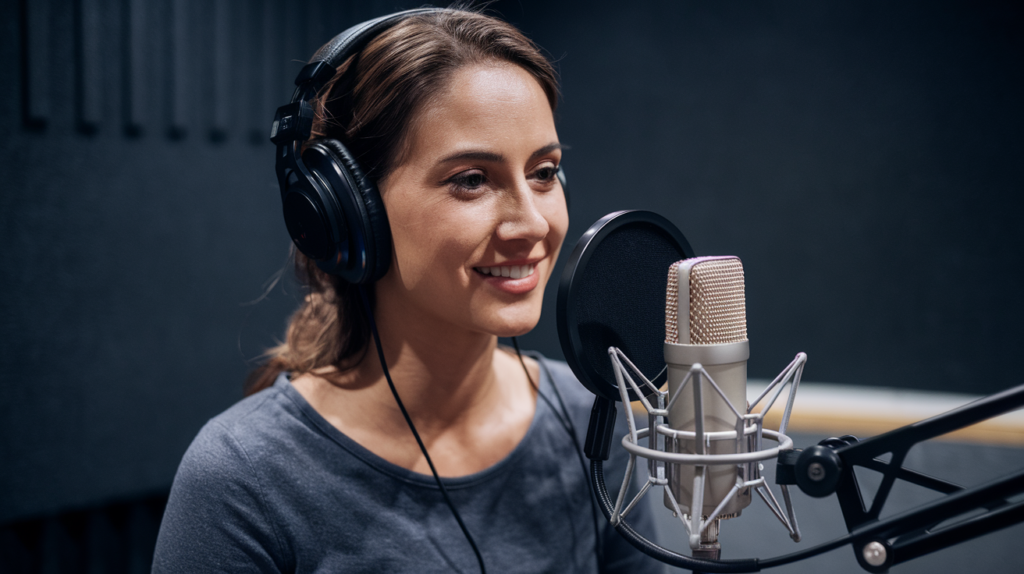Key Takeaways
- Regional Variations: Romanian speech exhibits distinct regional accents, such as the melodic tones of Transylvania and the sharper sounds of Moldova, reflecting local culture and history.
- Geographic Dialects: Understanding geographic dialects is essential for selecting appropriate voice talent, as urban areas feature modern slang while rural regions maintain traditional vocabulary.
- Sociolects: Factors like class and profession influence language use in Romania, leading to variations in communication styles that can impact audience connection in voiceover projects.
- Historical Influences: The evolution of Romanian speech has been shaped by interactions with various languages over centuries, making historical context crucial for appreciating regional expressions.
- Media Impact: Media and technology play a significant role in blending traditional dialects with contemporary expressions, affecting how language evolves across different demographics.
- Language Preservation: Ongoing efforts to preserve Romanian dialects highlight the importance of authenticity in voice talent selection, ensuring alignment with cultural nuances.
Ever wondered why Romanian speech sounds so different across regions? Variations in Romanian speech can be fascinating yet confusing, especially if you’re trying to grasp the language. From the melodic tones of Transylvania to the sharper accents of Moldova, each area boasts its unique flair that reflects local culture and history.
Overview of Variations in Romanian Speech
Romanian speech showcases a rich tapestry of regional variations, reflecting the country’s diverse culture and history. You’ll notice distinct characteristics as you explore different areas. For instance, Transylvania boasts melodic tones that create an almost musical quality in conversation. This pleasant lilt often captivates both native speakers and learners alike.
In contrast, the sharper accents found in Moldova present a stark departure from the softer sounds of Transylvania. These strong accents can sometimes challenge comprehension for those not familiar with them. The differences extend beyond mere pronunciation; vocabulary choices and even grammar can shift from one region to another.
Local culture plays a crucial role in shaping these variations. Historical influences, such as interactions with neighboring languages like Hungarian or Serbian, contribute to unique expressions and idioms within specific regions. Understanding these nuances enriches your appreciation for the language itself.
As a potential client seeking voice talent for projects involving Romanian content, recognizing these regional differences is essential. Whether you’re aiming for an authentic Moldovan accent or the charming intonations of Transylvania, selecting the right voice artist who embodies these variations enhances your project’s impact significantly.
Geographic Dialects
Geographic dialects in Romanian speech showcase fascinating regional variations that can influence communication and comprehension. Understanding these differences is crucial for selecting the right voice artist for your projects.
Regional Differences
Romanian’s regional dialects reflect distinct characteristics shaped by local cultures and histories. In Transylvania, you’ll notice a melodic intonation that lends a musical quality to conversations. This region’s speech may feel inviting, making it appealing for voiceover projects aimed at engaging audiences. Conversely, Moldovan accents present sharper sounds that might challenge newcomers but offer authenticity when portraying characters from this area. Recognizing these nuances ensures you choose the ideal voice talent to represent specific regions effectively.
Urban vs. Rural Speech
Urban and rural speech in Romania also presents notable contrasts. In cities like Bucharest, language tends to be more influenced by modern trends and foreign languages, often incorporating slang and contemporary expressions—perfect for dynamic voiceovers targeting younger audiences or urban settings. Rural areas maintain traditional vocabulary and pronunciation, reflecting deep cultural roots; this authenticity resonates well in storytelling or historical narratives requiring a genuine touch. When seeking a voice over actor for your project, consider how these urban-rural dynamics can enhance your content’s relatability and impact.
Sociolects in Romanian
Romanian speech features various sociolects influenced by class, education, and profession. Understanding these variations is vital for clients seeking voice talent that accurately represents their target audience.
Class and Education Factors
Class and education significantly shape how individuals communicate in Romanian. Higher education often correlates with more standardized language use while those from less privileged backgrounds may utilize regional dialects or colloquialisms. This difference creates a rich tapestry of speech patterns across social strata. For instance, urban professionals might adopt contemporary slang that reflects modern trends. Conversely, individuals from rural areas often maintain traditional vocabulary and pronunciation, which can add authenticity to any project seeking to capture the essence of local culture.
When selecting voice talent for your projects, consider these factors carefully; choosing a voice artist who resonates with the intended audience ensures clarity and connection.
Influence of Profession
Profession influences language use as well. Certain industries develop specialized jargon or expressions unique to their field. For example, medical professionals might employ technical terms unfamiliar to the general public, while artists might embrace more expressive language styles. These professional nuances not only affect communication but also impact how audiences perceive messages delivered through voiceover work.
Selecting a voice actor familiar with industry-specific terminology enhances credibility in your content. A voice over artist who understands professional lingo can convey messages effectively while connecting authentically with listeners.
Recognizing these sociolectal variations empowers you to choose the right voice over talent for your projects, ensuring they resonate deeply within specific contexts and communities.
Historical Influences on Romanian Speech
Romanian speech reflects a rich tapestry woven from its historical influences. Understanding these factors enhances your appreciation for the language’s nuances and can guide you in selecting the right voice talent for your project.
Language Evolution
Language evolution plays a crucial role in shaping Romanian speech. The language primarily stems from Latin, influenced by neighboring languages over centuries. Slavic languages, Greek, Turkish, Hungarian, and Italian have all left their marks. These interactions resulted in unique expressions and vocabulary that vary regionally. For instance, Transylvanian speakers might incorporate Hungarian terms into their conversations, enriching the melodic quality of their speech. Recognizing this evolution helps you appreciate why specific accents or idioms resonate in particular areas.
External Influences
External influences further diversify Romanian speech patterns. Historical events such as migrations and conquests introduced new linguistic elements that transformed local dialects. The Ottoman Empire’s presence brought Turkish words to daily conversation while Hungary’s proximity infused Hungarian phrases into common usage. This blend creates distinct regional flavors that are vital when considering voice artists for your projects; choosing someone who embodies these variations can significantly enhance authenticity. Whether aiming for urban vibrancy or rural tradition, grasping these external influences ensures your message aligns with cultural context and audience expectations.
Understanding how historical factors shape contemporary Romanian speech equips you with insights essential for effective communication through voiceovers or voice talent selection.
Media and Technology’s Role
Media and technology significantly shape variations in Romanian speech. They influence how language evolves, often blending traditional dialects with modern expressions. As you explore different voiceover options, understanding this impact becomes crucial for selecting the right voice talent.
Impact on Language Variations
Media platforms like television and social media expose speakers to a mix of regional accents and slang. For instance, urban centers such as Bucharest showcase contemporary speech trends that differ from rural areas where traditional vocabulary persists. This exposure creates a dynamic linguistic environment, leading to new expressions that resonate with younger audiences. When hiring a voice artist, consider how these influences align with your project’s tone and target audience.
Language Preservation Efforts
Efforts to preserve Romanian dialects are underway through various initiatives, including cultural programs and educational materials. These endeavors aim to maintain the rich tapestry of regional speech while adapting to modern communication needs. By supporting local artists who embody these unique variations, you enhance authenticity in your projects. Selecting a voice actor familiar with specific dialects ensures your content resonates deeply with viewers or listeners who appreciate cultural nuances.
Understanding the role of media and technology in shaping language will help you make informed choices when seeking out voice over talent that aligns perfectly with your vision.
Conclusion
Embracing the variations in Romanian speech enriches your understanding of this captivating language. By recognizing regional accents and sociolects, you can appreciate the cultural nuances that shape communication. This awareness not only enhances your language skills but also empowers you to select the most suitable voice talent for any project.
Whether you’re aiming for an authentic rural tone or a contemporary urban vibe, knowing these distinctions makes all the difference. As media and technology continue to influence spoken Romanian, staying attuned to these changes ensures your content resonates with diverse audiences. Ultimately, celebrating Romania’s linguistic diversity allows for deeper connections and more impactful storytelling.
Frequently Asked Questions
What are the regional variations in Romanian speech?
Romanian speech varies significantly across regions, with distinct characteristics influenced by local culture and history. For instance, Transylvania features melodic tones that lend a musical quality to conversations, while Moldova has sharper accents that may challenge comprehension for non-native speakers.
How do urban and rural speech differ in Romania?
Urban areas like Bucharest adopt modern slang and trends, while rural regions tend to preserve traditional vocabulary and pronunciation. This distinction is essential for selecting voice talent that resonates with specific audiences, whether aiming for a contemporary or authentic rural feel.
What role do sociolects play in Romanian language use?
Sociolects in Romanian reflect influences from class, education, and profession. Higher education often leads to more standardized language use, whereas those from less privileged backgrounds may utilize regional dialects. Understanding these variations helps clients choose voice talent that connects effectively with their audience.
How have historical influences shaped Romanian speech?
Romanian evolved primarily from Latin but has been influenced by Slavic languages, Greek, Turkish, Hungarian, and Italian over time. Historical events like migrations have diversified its speech patterns through unique regional expressions and vocabulary influenced by neighboring cultures.
How does media impact variations in Romanian speech?
Media platforms such as television and social media expose speakers to various regional accents and slang. This dynamic environment blends traditional dialects with modern expressions, making it crucial for clients to consider these influences when selecting voice talent for their projects.
Why is it important to recognize regional differences when choosing voice talent?
Recognizing regional differences ensures that selected voice talent embodies the linguistic nuances of specific areas in Romania. This authenticity can significantly enhance a project’s impact by resonating more deeply with audiences who appreciate cultural subtleties.







